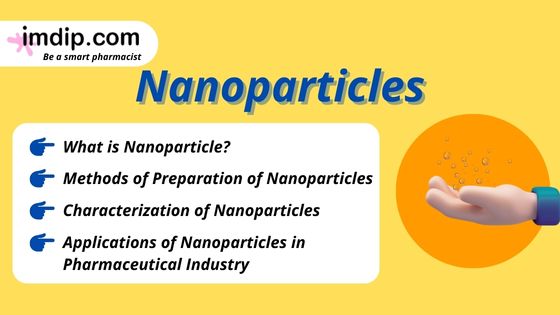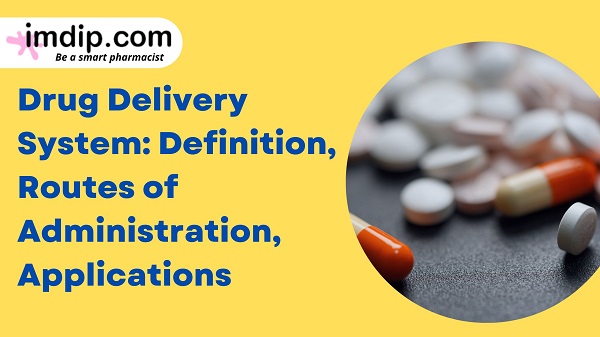Nanoparticles, also known as ultrafine particles, are tiny particles with a size range of 1-100 nanometers. Due to their unique properties such as the high surface area to volume ratio, nanoparticles have a wide range of applications in various fields, including biomedicine, electronics, energy, and environmental remediation. There are various methods for the preparation of nanoparticles, each with its advantages and disadvantages. In this article, we will discuss some of the most commonly used methods of preparation of nanoparticles.


Characterization of Nanoparticles
Size and morphology characterization:
- Transmission electron microscopy (TEM): TEM is a powerful technique that provides information on the size, morphology, and crystal structure of nanoparticles. In TEM, a beam of electrons is passed through a thin sample, and the interaction of electrons with the sample provides high-resolution images of nanoparticles.
- Scanning electron microscopy (SEM): SEM is a technique used to image the surface of nanoparticles. In SEM, a beam of electrons is scanned across the surface of the sample, and the electrons that are scattered back are detected to generate an image.
- Atomic force microscopy (AFM): AFM is a technique used to image the surface of nanoparticles with high resolution. In AFM, a sharp tip is scanned across the surface of the sample, and the interaction between the tip and the sample provides information on the size and morphology of nanoparticles.
Chemical characterization:
- X-ray diffraction (XRD): XRD is a technique used to determine the crystal structure of nanoparticles. In XRD, a beam of X-rays is passed through the sample, and the diffraction pattern provides information on the crystal structure of nanoparticles.
- Fourier transform infrared spectroscopy (FTIR): FTIR is a technique used to analyze the chemical composition of nanoparticles. In FTIR, a beam of infrared radiation is passed through the sample, and the absorption of radiation provides information on the chemical composition of nanoparticles.
- Raman spectroscopy: Raman spectroscopy is a technique used to analyze the vibrational modes of nanoparticles. In Raman spectroscopy, a beam of laser light is passed through the sample, and the scattering of light provides information on the vibrational modes of nanoparticles.
Surface characterization:
- Surface area analysis: Surface area analysis is a technique used to measure the surface area of nanoparticles. In surface area analysis, the nanoparticles are exposed to gas molecules, and the adsorption of gas molecules provides information on the surface area of nanoparticles.
- Zeta potential measurement: Zeta potential measurement is a technique used to measure the surface charge of nanoparticles. In zeta potential measurement, the nanoparticles are suspended in a solution, and the movement of nanoparticles under an applied electric field provides information on the surface charge of nanoparticles.
Methods of Preparation of Nanoparticles
Physical Methods
- Vapor condensation: In this method, the vapor is produced by heating a material in a vacuum. The vapor is then condensed onto a surface, forming nanoparticles. This method is used to prepare nanoparticles of metals, semiconductors, and oxides.
- Laser ablation: In this method, a high-energy laser is used to ablate a target material, producing nanoparticles. This method is used to prepare nanoparticles of metals, semiconductors, and carbon-based materials.
- Sputtering: In this method, a target material is bombarded with high-energy ions, producing nanoparticles. This method is used to prepare nanoparticles of metals and semiconductors
Chemical Methods
- Sol-gel method: In this method, a precursor solution is prepared by mixing a metal alkoxide or salt with a solvent. The solution is then hydrolyzed and polymerized to form a gel. The gel is then dried and calcined to form nanoparticles. This method is used to prepare nanoparticles of oxides.
- Co-precipitation: In this method, two or more metal salts are dissolved in a solvent, and a precipitant is added to the solution. The precipitate is then washed and dried to form nanoparticles. This method is used to prepare nanoparticles of metals and oxides.
- Microemulsion: In this method, a microemulsion is formed by mixing two immiscible liquids, such as oil and water. A precursor solution is then added to the microemulsion, and nanoparticles are formed in the oil phase. This method is used to prepare nanoparticles of metals and oxides.
Biological Methods
- Green synthesis: In this method, nanoparticles are synthesized using plant extracts, bacteria, or fungi. The biological agents act as reducing and capping agents, and the nanoparticles are formed by the reduction of metal salts. This method is eco-friendly and can be used to prepare nanoparticles of metals, metal oxides, and carbon-based materials.
- Biomineralization: In this method, nanoparticles are synthesized by the deposition of inorganic materials on organic templates, such as proteins or DNA. This method is used to prepare nanoparticles of metals and metal oxides.
Applications of Nanoparticles in the Pharmaceutical Industry
- Targeted Drug Delivery: One of the significant applications of nanoparticles in the pharmaceutical industry is targeted drug delivery. Nanoparticles can be designed to deliver drugs to specific cells or organs in the body, increasing their efficacy and reducing side effects. For instance, nanoparticles can be functionalized with ligands that selectively target tumor cells, allowing for the delivery of chemotherapy drugs directly to the cancer cells.
- Enhanced Solubility: Many drugs have poor solubility, which can limit their effectiveness. Nanoparticles can be used to increase the solubility of drugs, allowing them to dissolve more readily in water and improve bioavailability. Nanoparticles can also protect the drug from degradation in the body and facilitate its absorption, allowing for more efficient delivery.
- Imaging: Nanoparticles can be used in medical imaging to improve the visualization of tissues and organs. For example, gold nanoparticles can be used as contrast agents in X-ray imaging, while magnetic nanoparticles can be used in magnetic resonance imaging (MRI) to provide higher contrast and resolution.
- Vaccine Delivery: Nanoparticles have the potential to improve vaccine efficacy by enhancing the delivery of antigens to immune cells. Nanoparticles can be functionalized with antigens, which are then recognized by immune cells, triggering an immune response. This approach has the potential to improve vaccine efficacy and reduce the need for booster shots.
- Gene Therapy: Gene therapy is a promising field that aims to treat genetic disorders by introducing genetic material into cells. Nanoparticles can be used to deliver genetic material into cells, improving the efficiency and specificity of gene therapy.
Related Articles





















.png)
